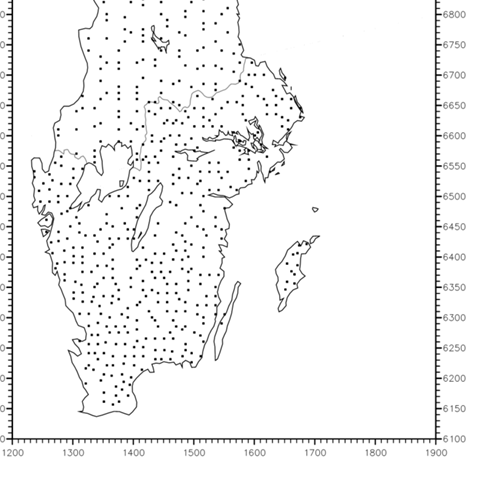ICP Forests: pioneers on tree health monitoring

A fear of dying and declining forests kickstarted ICP Forests – a 40-year-old programme for monitoring air pollution, and a great example of how global programmes can be harmonised with national ones.
In a world increasingly affected by climate change, a big talking point is forests as a carbon sink. Both on a global and a national scale.
In the early 1980’s however, the main worry was tree health. Specifically how trees all over the world, but especially in the industrialised west, had increasingly thin crowns and seemed to be dying. The theory was that this was caused by air pollution from the burning of fossil fuels.
Birth of ICP Forests
To collect data and keep track of forest health, a number of initiatives were launched under the UN air pollution convention, part of the economic convention for Europe; UNECE. One of these initiatives International Co-operative Programme on Assessment and Monitoring of Air Pollution Effects on Forests – ICP Forests. Another programme, ICP IM was also started, dealing with integrated surveillance within catchment areas, financed through the Swedish environmental protection agency, Naturvårdsverket.
– People worried about acidification due to oil and coal power. That debate came to Sweden early on because we saw the same things here, says Sören Wulff, environment analysis specialist at the department of forest resource management at SLU, and the main coordinator for field inventories and data deliveries to ICP Forests.
An inventory of all European forests was to be swiftly carried out. A chessboard type grid was drawn up, with squares measuring 16 by 16 kilometres; the intersections marking the sampling plots.
Integrated into the NFI
In 1984, Sweden started monitoring symptoms of tree damage. The inventory meant that crown damage, which was seen as an indicator of tree health, was integrated into the Swedish national forest inventory, Riksskogstaxeringen. Data was compiled on a national and regional level and this continued for 10 years, up until 1994. By now, the political development was affecting the monitoring programme:
– With the membership in the EU came a regulation on monitoring of forest damage according to ICP Forests manuals. This meant that we started a separate inventory of forest damage in 1994, says Sören Wulff.
Necessary adaptations and harmonisation
Instead of creating new sample plots, Sweden chose to use the permanent plots already in use within the NFI. This was done by choosing the NFI plot closest to the ICP grid intersection. That type of harmonisation – to make the job easier without losing compatibility – has often been the work of Sören Wulff.
– ICP has a manual and I have long been trying to stick to that and work according to plan. For example by using the closest permanent plot. But we’ve also adapted things to our reality. In southern Sweden we use the 16 x 16 grid, but further north it’s 32 x 16 and even further north it’s 32 x 32. This is a compromise because otherwise we’d get several hits on the same plot, says Sören Wulff.
A new way of working
The Swedish ICP reporting continued unchanged until 2006, when EU financing stopped. By then, acidification and air pollution was no longer a hot topic.
In countries where the monitoring was carried out separately from the NFI, data collecting for ICP often stopped. Since the Swedish programme was tied in with the NFI however, it wasn’t a problem from a budget standpoint. Currently, Sweden monitors for ICP with a rotating schedule, returning to the same plot after five years.
In 2018 there was a motion to stop monitoring crown damage and ICP deliveries. By then however, the EU’s national emissions ceilings directive (NEC), devised to lower national emissions of air pollutants, meant that there was still a need for data. Says Sören Wulff:
– To honour our commitments towards the EU, we had to use data meant for ICP Forests. Hence we’re able to continue – at least for a while.